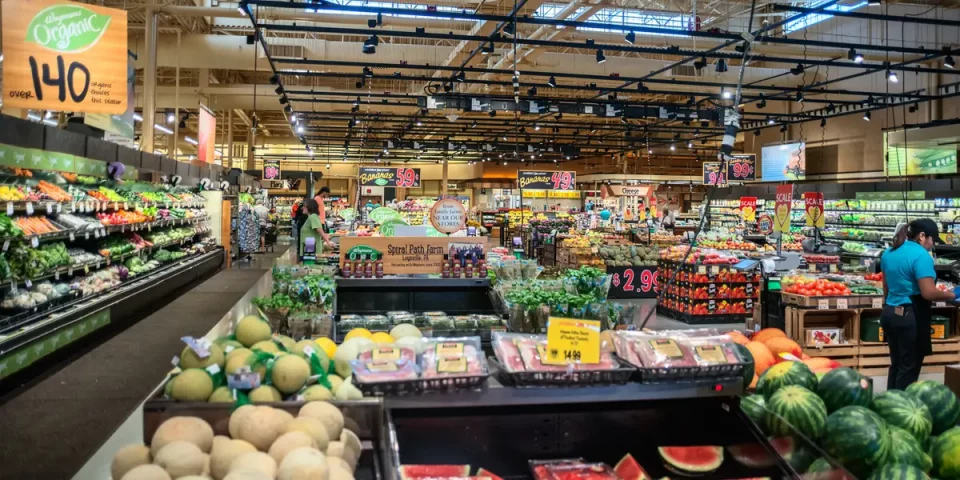The American supermarket sector is on the cusp of transformation. The forces reshaping it are no longer just driven by the strategies of big retailers but increasingly dictated by consumers themselves. Shoppers are changing the way they buy food, the prices they are willing to pay, and the level of convenience they demand. Over the next five years, these shifts will bring about a new era of grocery retail in the United States—one marked by fierce competition, strategic experimentation, and possibly industry-defining mergers.
Discounters on the March
Chains such as Aldi and Lidl have already altered the competitive balance in Europe, and their steady expansion in the United States is beginning to unsettle established players. By focusing on efficiency, low prices, and private-label innovation, discounters appeal to a growing demographic of price-conscious shoppers. With the US consumer facing ongoing cost-of-living pressures, the appetite for bargain-hunting has never been stronger. The question is not whether discounters will expand further, but how deeply they will penetrate urban and suburban markets already dominated by long-standing national chains.
Walmart: The Giant That Won’t Be Dethroned Easily
Walmart remains the undisputed king of American grocery retail. Its sheer scale, vast distribution network, and aggressive use of technology mean it is well placed to defend its dominance. Yet even Walmart is evolving. Increasingly, the company’s profitability relies on side revenues such as advertising, logistics services, and membership programmes, showing that retail alone is no longer the sole battlefield. The next era for Walmart will be about maintaining its grip on physical retail while growing into a diversified services giant.
Amazon and the E-Commerce Challenge
No discussion of the future can overlook Amazon, the master of e-commerce. While its attempts to crack the supermarket sector with Amazon Fresh and physical outlets have been mixed, its position in online shopping remains unmatched. As more consumers become accustomed to home delivery, subscription services, and AI-driven recommendations, Amazon remains the greatest digital threat to traditional grocers. The rise of online-only supermarket concepts—lean operations that cut overheads and sell cheaper through direct delivery—could accelerate this trend, particularly if younger consumers continue to favour convenience over the in-store experience.
Kroger and Albertsons: Merger or Stalemate?
Kroger continues to assert its presence, insisting it is here to stay. But the failed attempt to merge with Albertsons leaves lingering questions. Would a second attempt be possible? Could new conditions or regulatory compromises pave the way for approval? The logic of consolidation is strong: scale brings buying power, bargaining leverage with suppliers, and efficiency in logistics. Yet regulators remain wary of reduced competition and potential harm to consumers. The next five years may well see renewed efforts—not only from Kroger and Albertsons but from other players who recognise that consolidation might be the only way to compete with Walmart and Amazon.
Consumers Dictating the Market
Ultimately, the power lies with the shopper. Buying habits are evolving:
-
Price sensitivity is rising, with bargain-hunting now a routine part of grocery shopping.
-
Channel flexibility means customers move between discounters, supermarkets, and online platforms with ease.
-
Value expectations extend beyond cost, with consumers seeking healthier, fresher, and ethically sourced products without paying a premium.
This shift puts unprecedented pressure on retailers to adapt quickly—or risk being left behind.
The Role of the Economy
The health of the US economy will also shape the next phase. A recovery in wages and employment could ease some of the strain on households, allowing supermarkets to compete on service and innovation rather than pure price. Conversely, if economic pressures persist, the winners will be those who can deliver the lowest prices while maintaining acceptable quality.
The Next Five Years
Looking ahead, the landscape could take several forms:
-
Renewed consolidation, with giants like Kroger and Albertsons revisiting merger ambitions.
-
Relentless expansion of discounters, with Aldi and Lidl securing bigger market shares.
-
Digital disruption, as Amazon and potential online-only supermarkets capture more sales.
-
Hybrid models, where physical stores become fulfilment hubs to balance in-store shopping and delivery.
What is certain is that the US supermarket sector is heading into uncharted territory. Competition will intensify, and the balance of power will be decided not in boardrooms alone but in the hands of millions of consumers who are rewriting the rules of grocery shopping every time they make a purchase.

